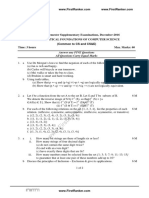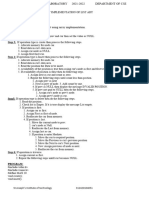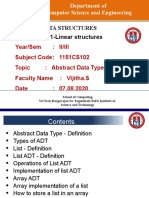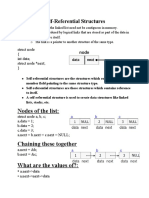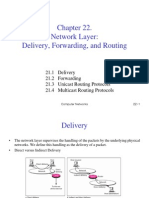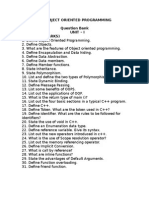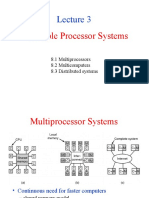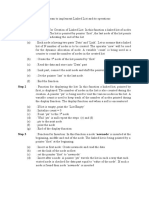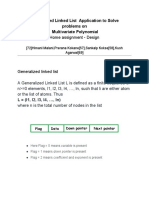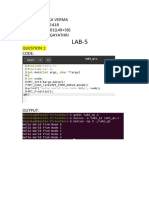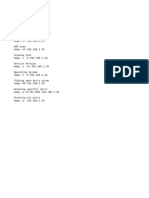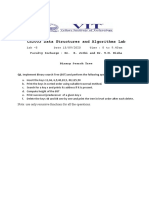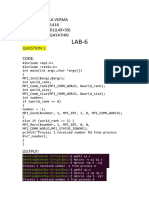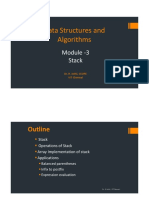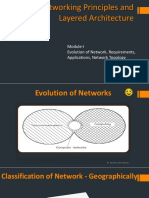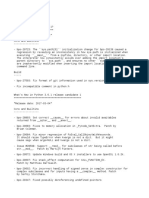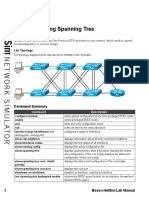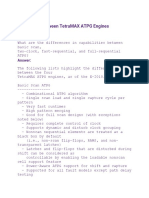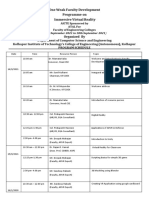0% found this document useful (0 votes)
600 views19 pagesData Structure Module-3 Doubly Linked List
The document discusses different types of linked lists including doubly linked lists. It describes how doubly linked lists contain links between nodes in both directions, allowing traversal forward and backward. It provides examples of adding nodes to an empty doubly linked list as well as inserting nodes at the beginning, end, and middle of an existing list by updating the next and prev pointers.
Uploaded by
bhumika.verma00Copyright
© © All Rights Reserved
We take content rights seriously. If you suspect this is your content, claim it here.
Available Formats
Download as PPTX, PDF, TXT or read online on Scribd
0% found this document useful (0 votes)
600 views19 pagesData Structure Module-3 Doubly Linked List
The document discusses different types of linked lists including doubly linked lists. It describes how doubly linked lists contain links between nodes in both directions, allowing traversal forward and backward. It provides examples of adding nodes to an empty doubly linked list as well as inserting nodes at the beginning, end, and middle of an existing list by updating the next and prev pointers.
Uploaded by
bhumika.verma00Copyright
© © All Rights Reserved
We take content rights seriously. If you suspect this is your content, claim it here.
Available Formats
Download as PPTX, PDF, TXT or read online on Scribd
/ 19

